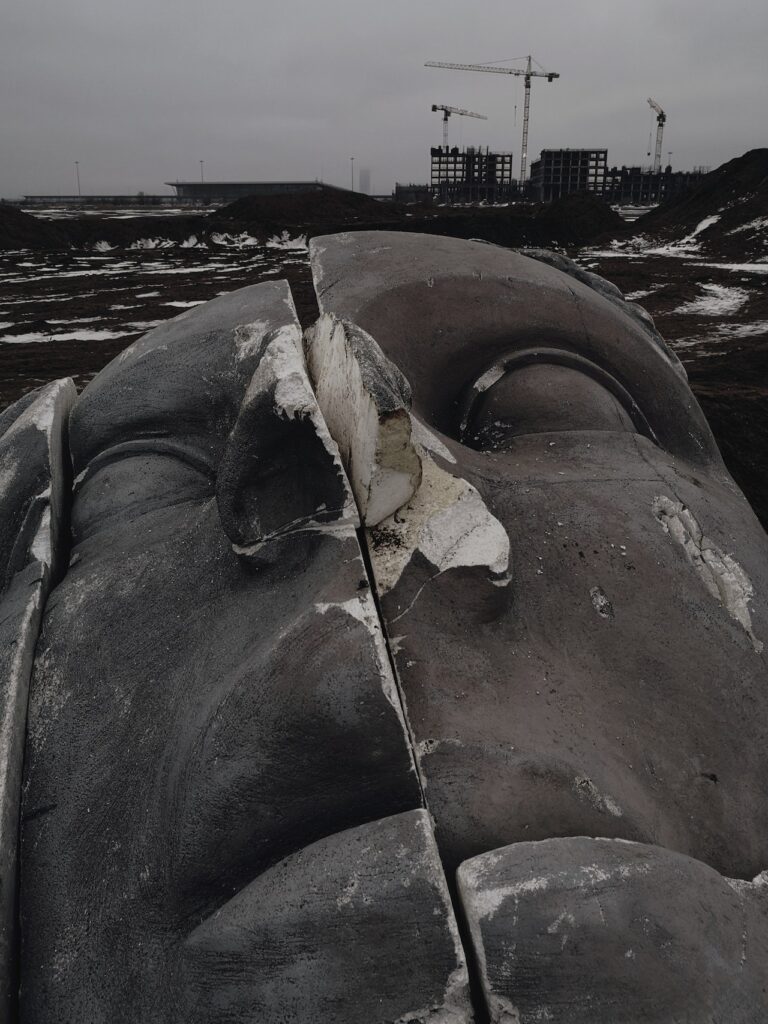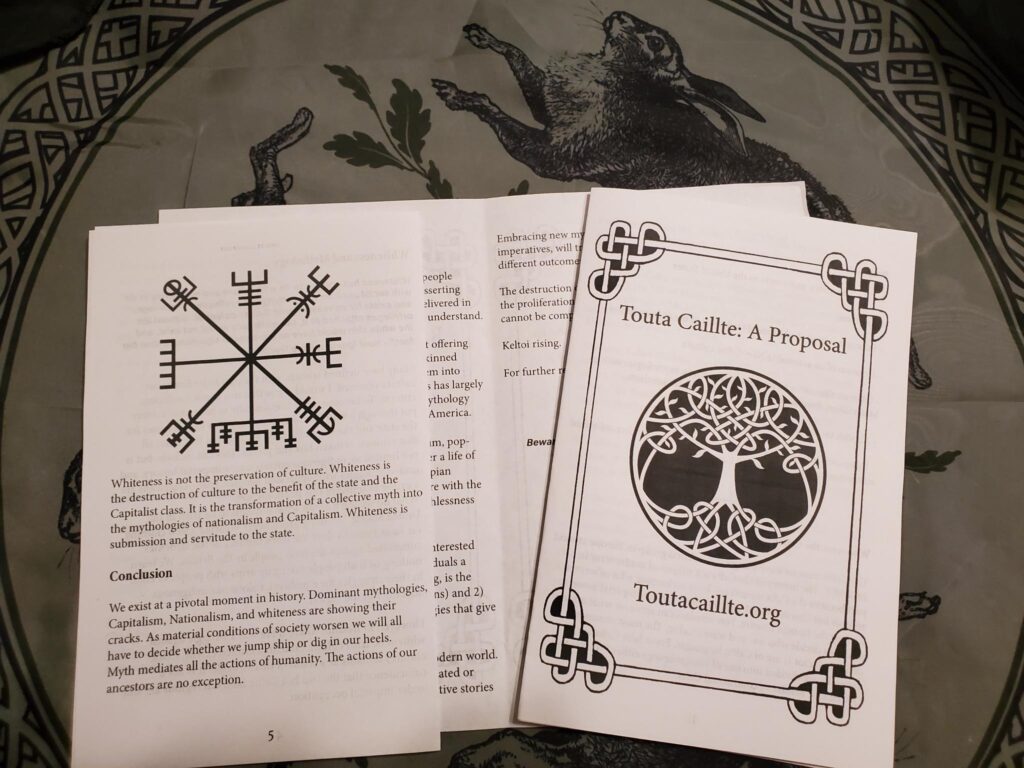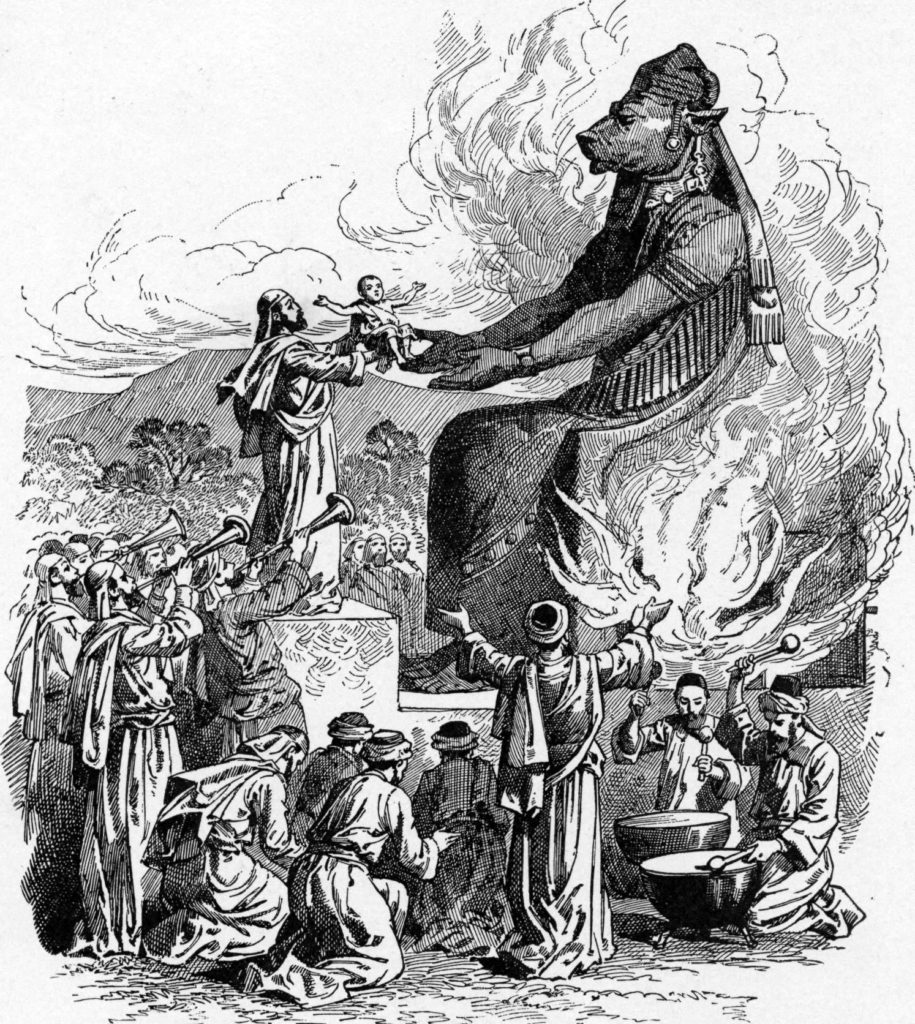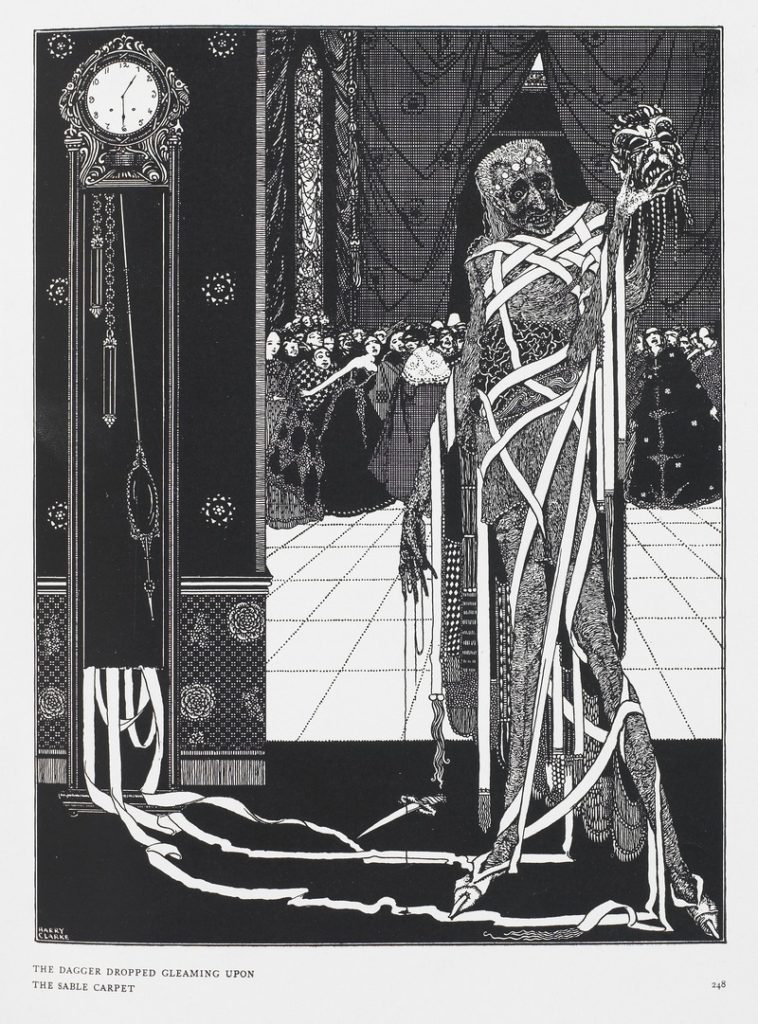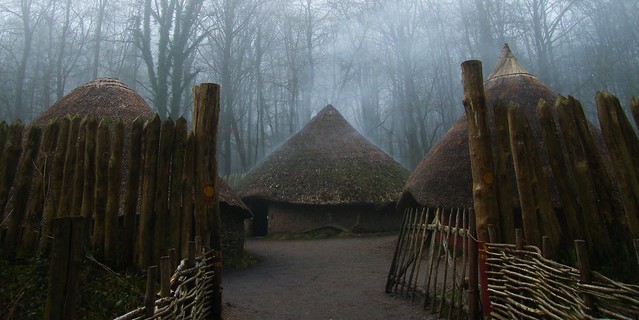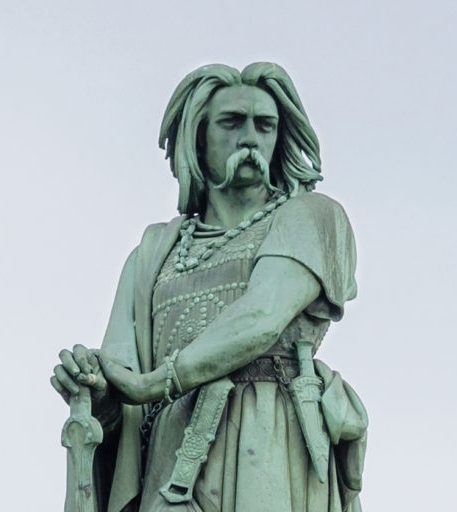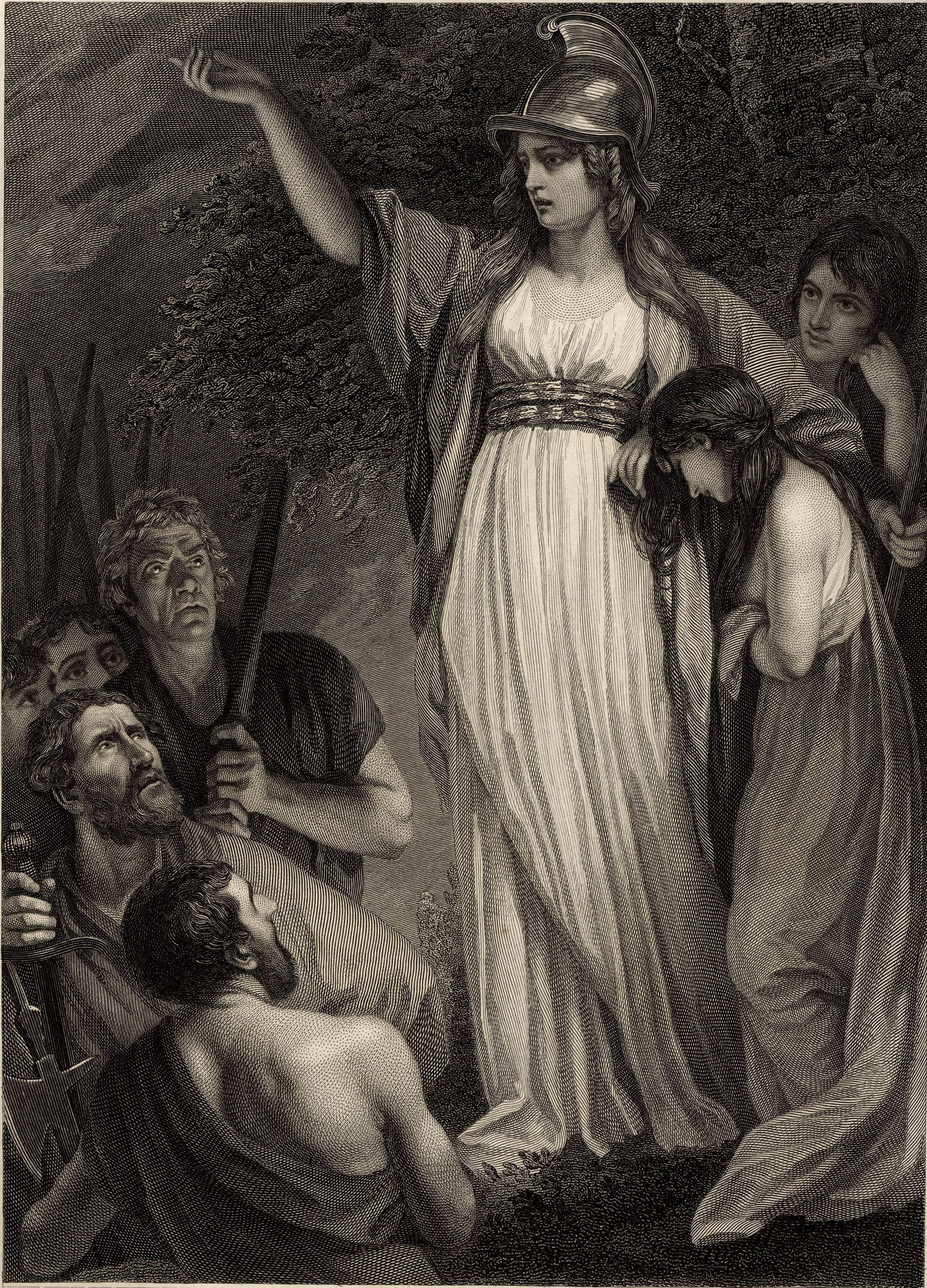The mythologies of Humanism rose to prominence as the bedrock of liberal society after the death of God in European Christian society. Boldly, Liberal society charged forward, promising a new age of enlightenment under the doctrine of reason, compassion, human agency, and Scientific Materialism. In taking on this Scientific Materialist perspective, all had assumed that rule of myth was gone, and the fate of man rested in the hands of “the people” guided by the infallibility of objective truths.
Author Archives: ᚛ᚄᚓᚐᚅ ᚕᚓᚓᚅᚓ᚜
Instructions: 1) Download PDF by selecting one of the links below. 2) Open the PDF in the program of your choice. The example featured here will use Firefox. 3) In destination select your printer. In orientation select “Portrait”. In print on two sides select “Flip on short edge”. If printed correctly the pamphlet will consist […]
Capitalism has become all pervasive in our material lives, there is no escape. Everywhere we go, our psyches are under the constant assault by the sigils of dead and decaying capital. Even when we travel far into “the wilderness” (managed by the laws of Capitalist efficiency of course) we find ourselves breathing polluted air and swimming in waters contaminated by plastic.
Beltane was the summer festival of the Celtic people in celebration of the returning fertility of the Earth. Many of the festivals and rituals revolved around blessing and protecting livestock or crops. The Aos sí were thought to be particularly active at this time and people would often leave offering for them. Extensive historical records have been found for the celebration of Beltane in both Ireland and Scotland.
The Conservative reaction to the Covid-19 pandemic has seemed bizarre to many Liberals and those on the political Left. However, I would argue that the phenomenon is fairly easy to understand if we analyze the situation from the perspective of identity and whiteness. From this analysis, we can make a solid case for the abolition […]
The following article seeks to sum up both practices and theoretical aspects of the Toutā Caillte project into a simple, workable framework, which we have termed Barbarianism. This is a living document, and as the project proceeds, new versions of this article will be made available.
Vercingetorix was born the son of Celtillus the Arvernian, a Gallic tribal leader. Accounts of Celtillus are conflicting; however, according to Caesar, he was put to death for attempting to consolidate all the tribes of Gaul. While he failed, he would certainly serve as an inspiration to his son, who would envision a Gaul returning to its Celtic roots, free of Germanic raiders and Roman rulers.
We are proud to announce the Barbarian Ancestor Worship Series. This series delves deep into the history of significant figures across indigenous European traditions, spotlighting those who fiercely defended their people. Notable individuals include the Celtic Vercingetorix, who led a unified resistance against the Roman Empire; Boudicca, the queen who rebelled against Roman occupation in Britain; and the Germanic Arminius, known for his strategic defeat of three Roman legions in the Teutoburg Forest.
Cernunnos is generally depicted as a bearded man with deer antlers, holding a snake in one hand and a torc in the other. Cernunnos is associated with fertility, nature, and the life-death cycle. In some depictions, Cernunnos is shown with a purse full of gold. This is thought by some to be a metaphorical reference to knowledge or wisdom, not monetary wealth. Little is known for sure about the role Cernunnos played historically or how he was worshiped.
For some time now, the Left has been encouraging people to abandon whiteness. While the Left is correct in asserting that whiteness should be abandoned, this is often delivered in platitudes that very few, if any, in the general public understand.
